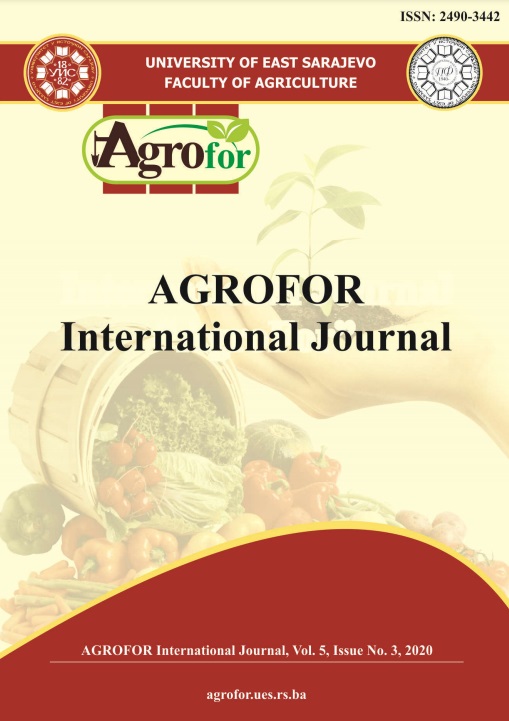TOXICITY TEST OF INDIVIDUAL AND COMBINED TOXIC EFFECTS OF GLYPHOSATE HERBICIDE AND HEAVY METALS ON CHICKEN EMBRYOS
DOI:
https://doi.org/10.7251/AGRENG2003064SAbstract
The aim of this study was to determine the individual and combined toxicity of
Glialka Star herbicide (glyphosate 360 g/l) and heavy metals (copper and
cadmium) on the development of chicken embryos. On the first day of incubation,
chicken eggs were injected by 0.1 ml of the test materials. The applied
concentration of copper and cadmium sulphate was 0.01% and that of herbicide
Glialka Star was 2%. The chicken embryos were examined on day 19 by the
followings: rate of embryo mortality, body mass, type of developmental anomalies
by macroscopic examination. The body weight was evaluated statistically by oneway
ANOVA combined with Dunnett post-test, the embryo mortality and the
developmental anomalies were analysed by Fisher test. Our teratogenicity study
revealed that the combined administration of heavy metals (copper, cadmium) and
glyphosate (K-salt) containing herbicide formulation caused significant reduction
in the body weight of embryos and a significant increase in the rate of embryonic
mortality and the incidence of developmental anomalies. The joint toxic effect of
heavy metals and Glialka Star is an additive effect compared to the individual
toxicity of the test materials.

